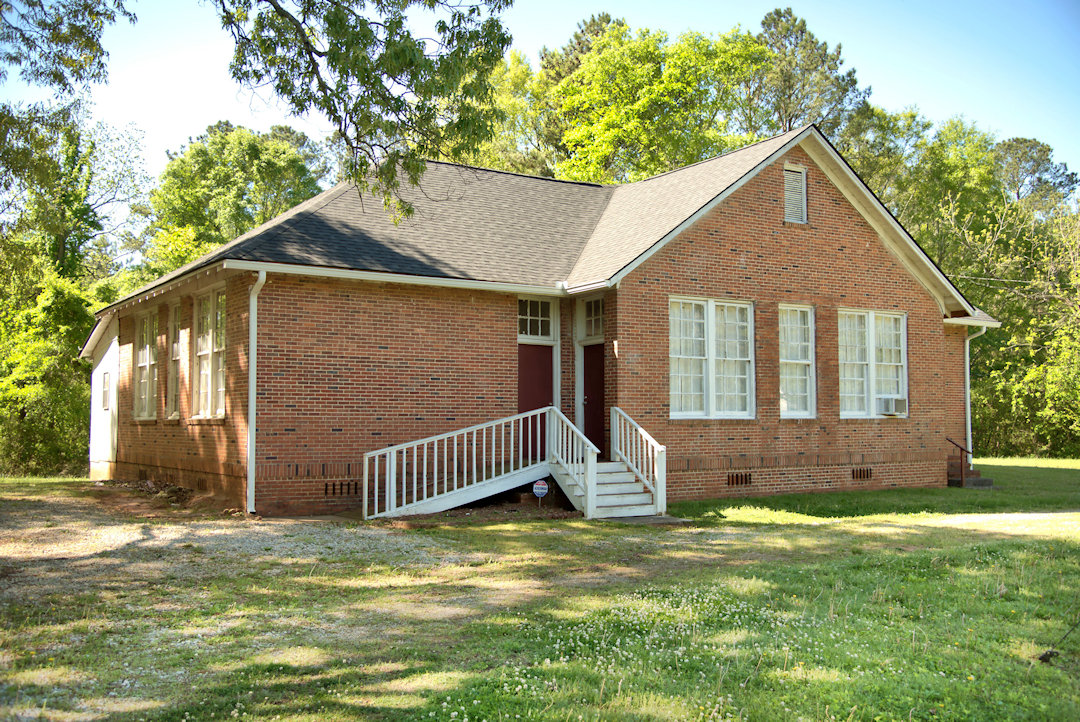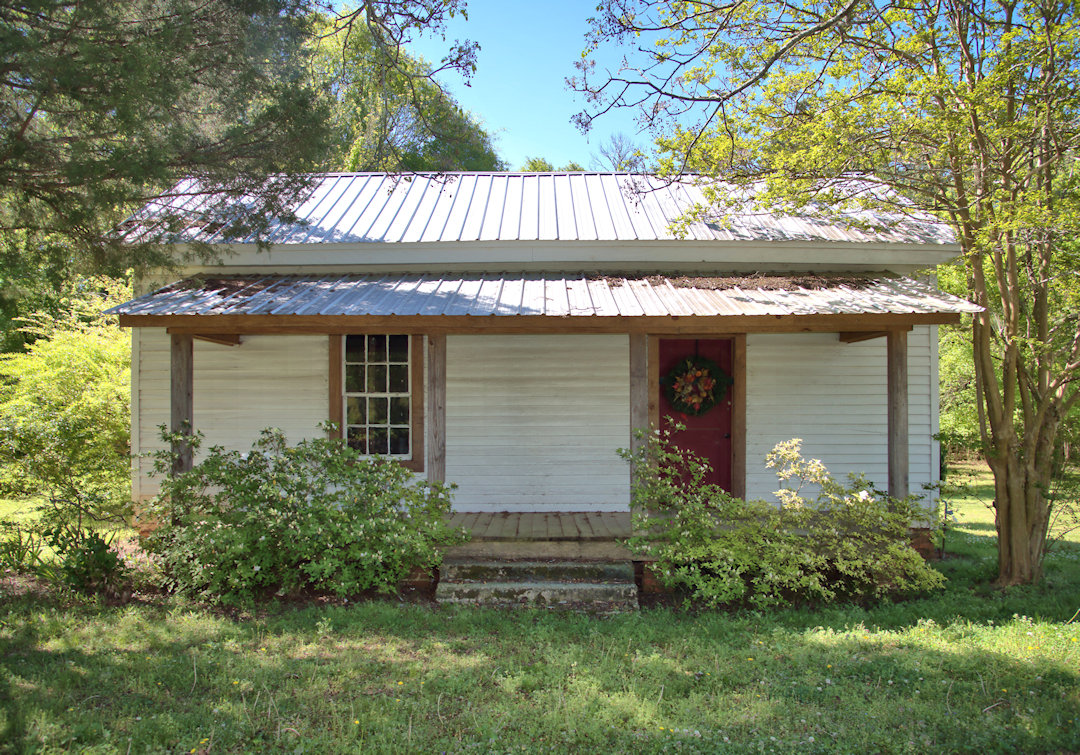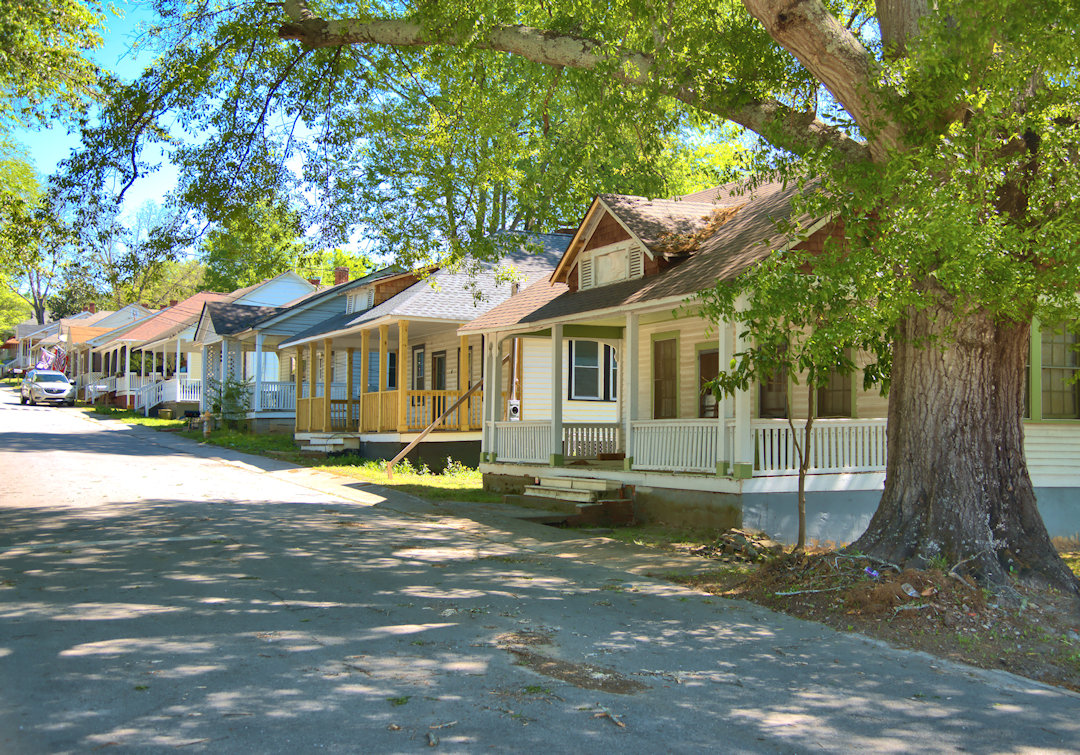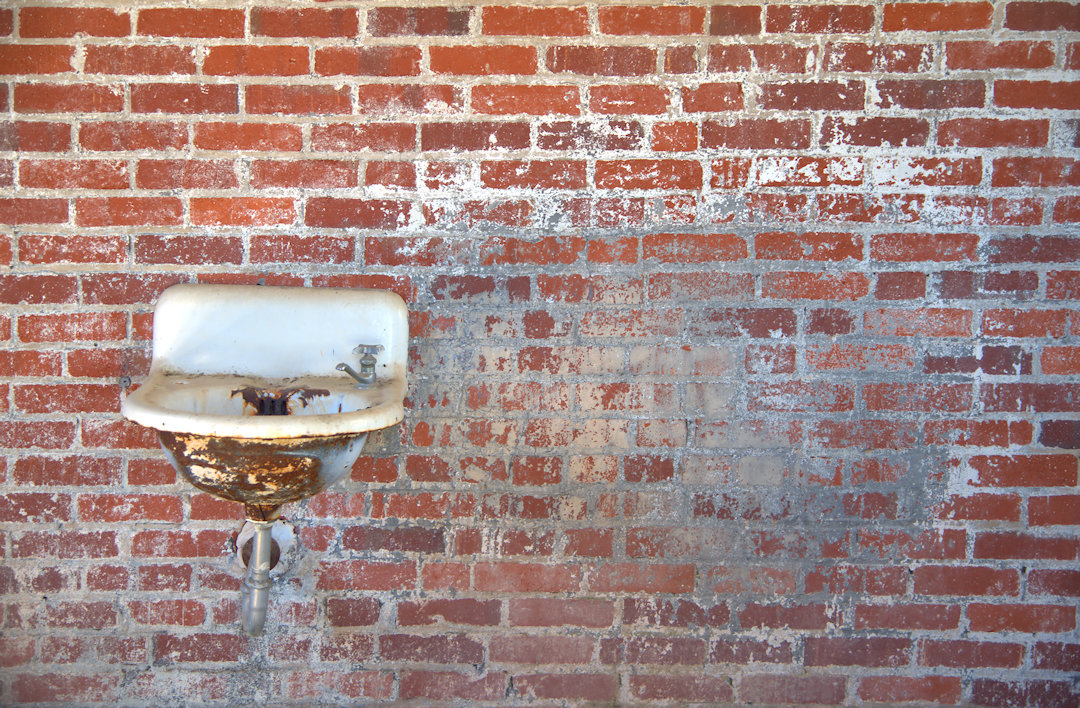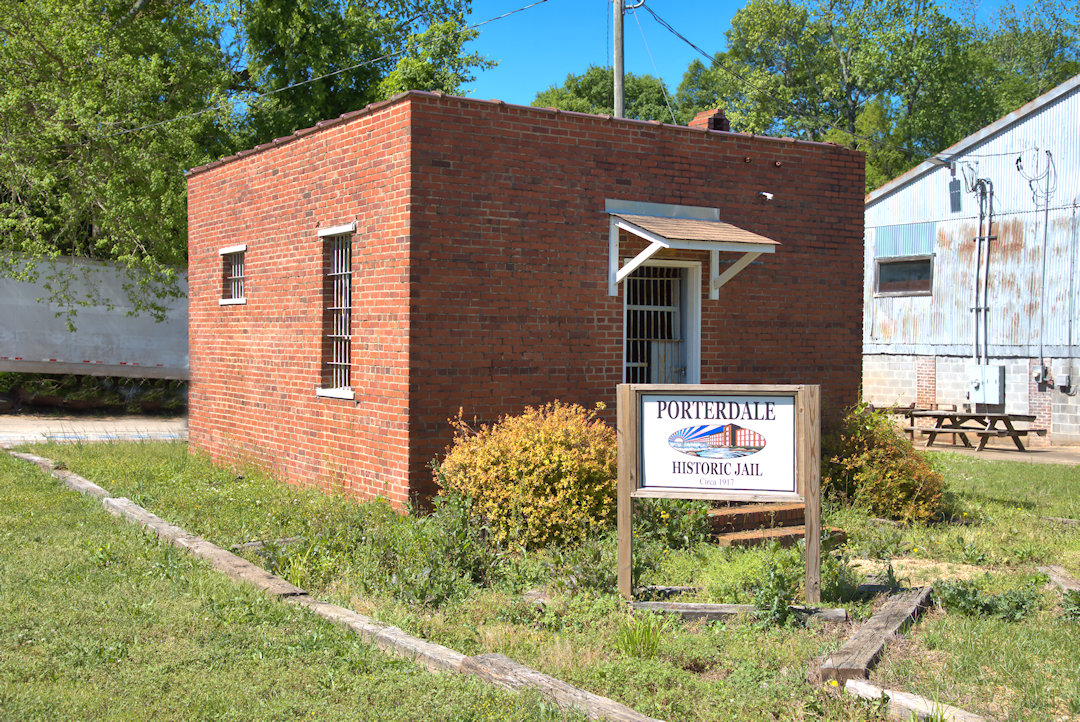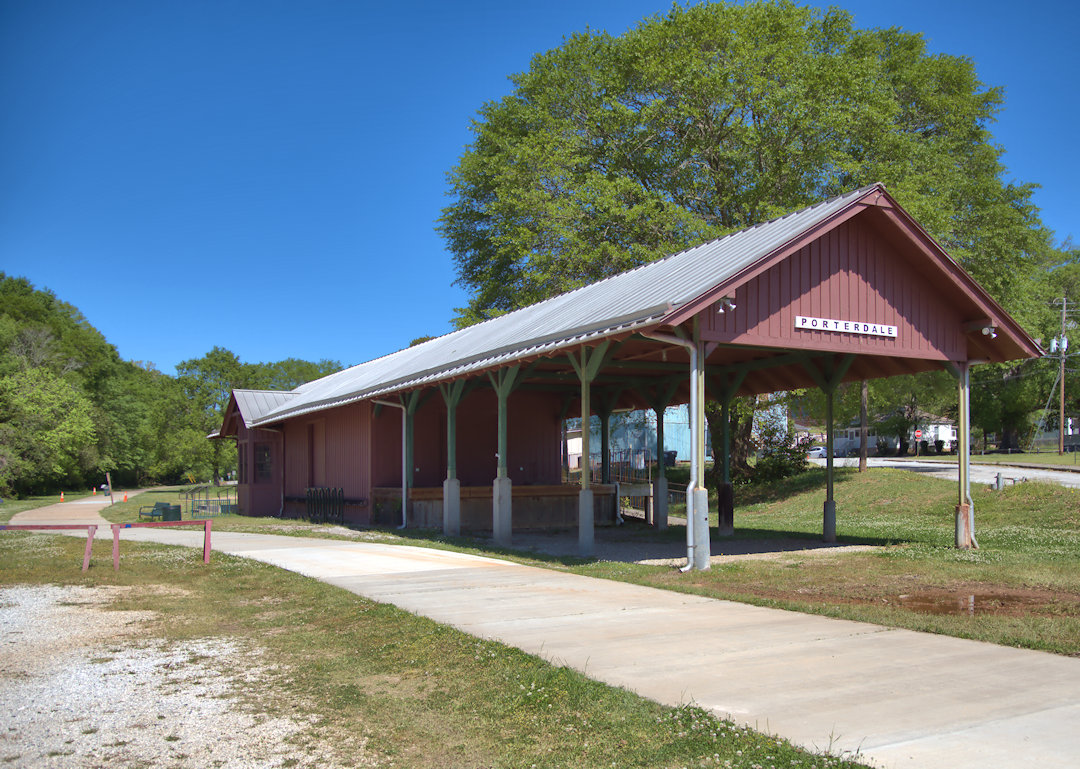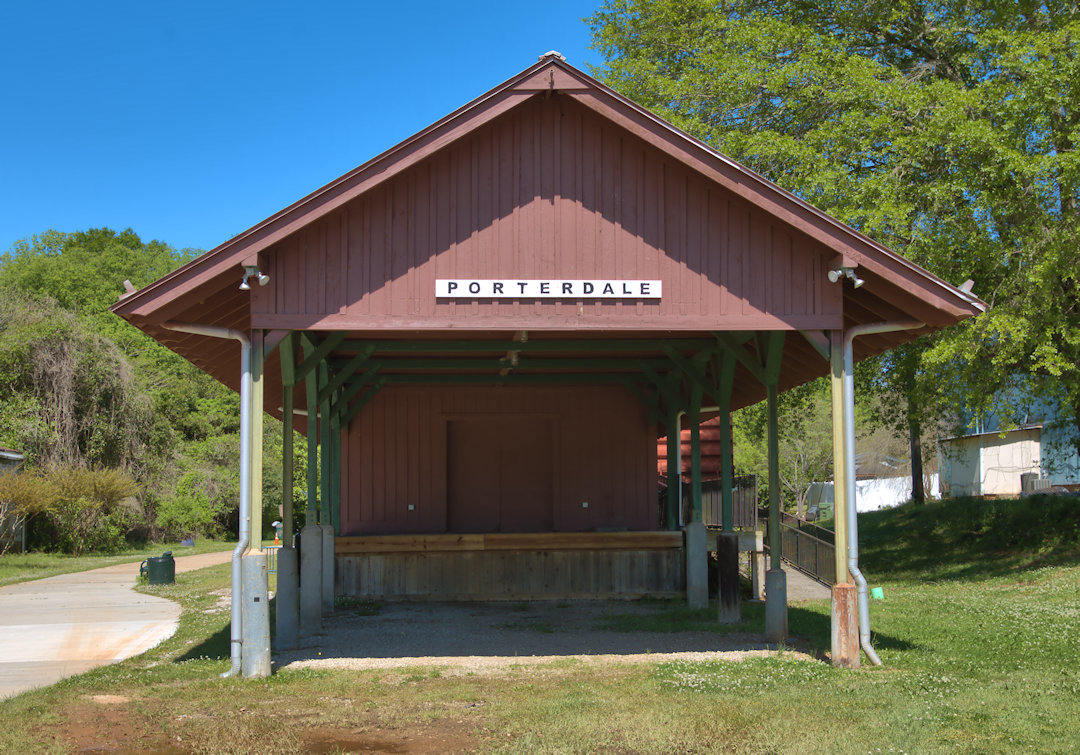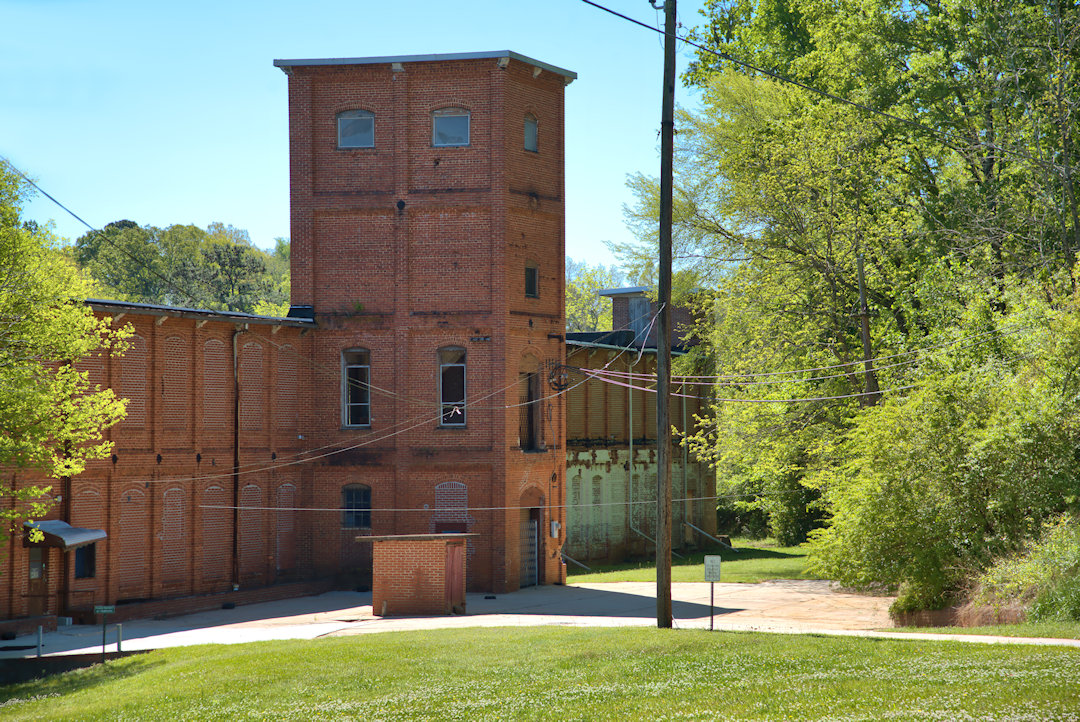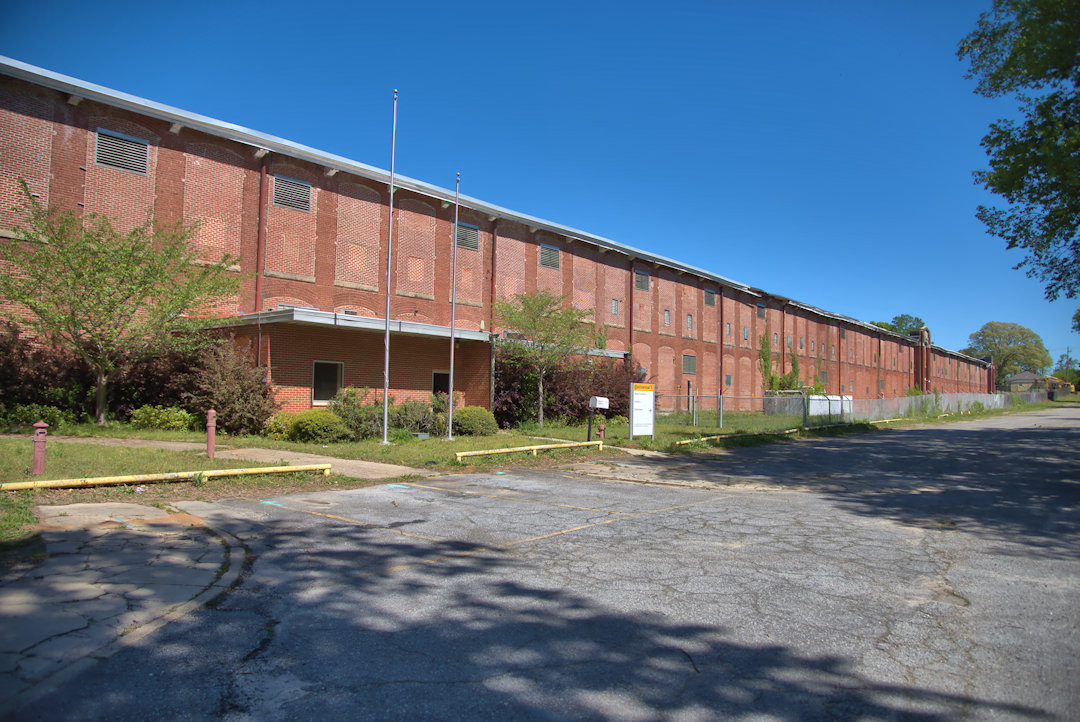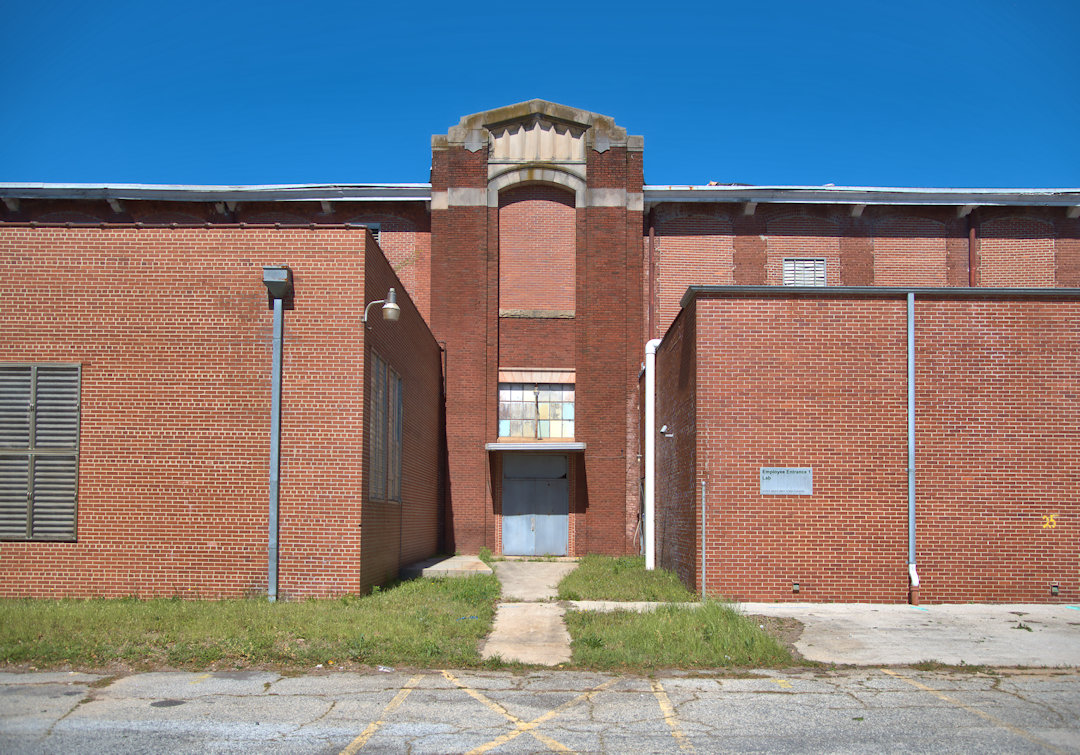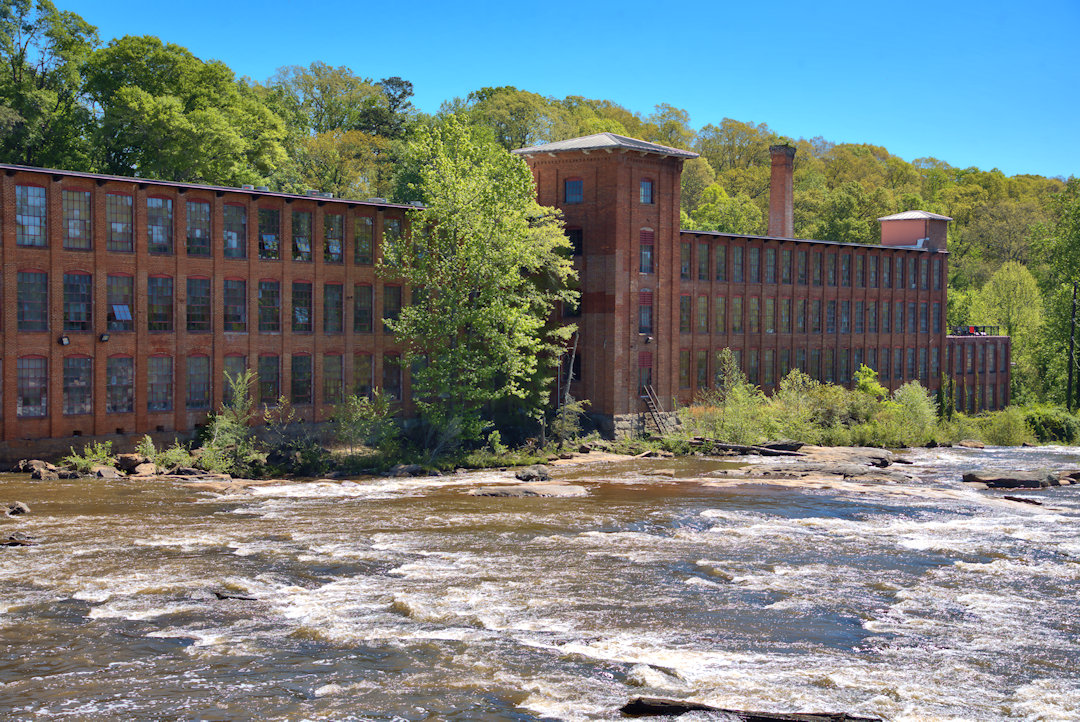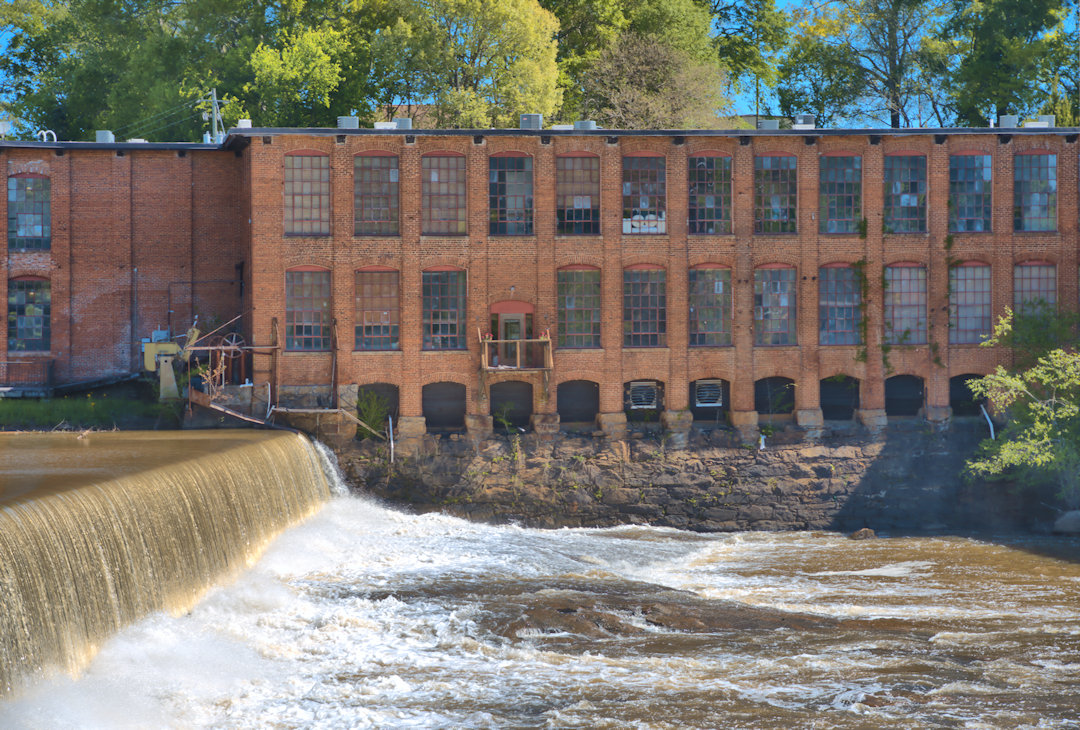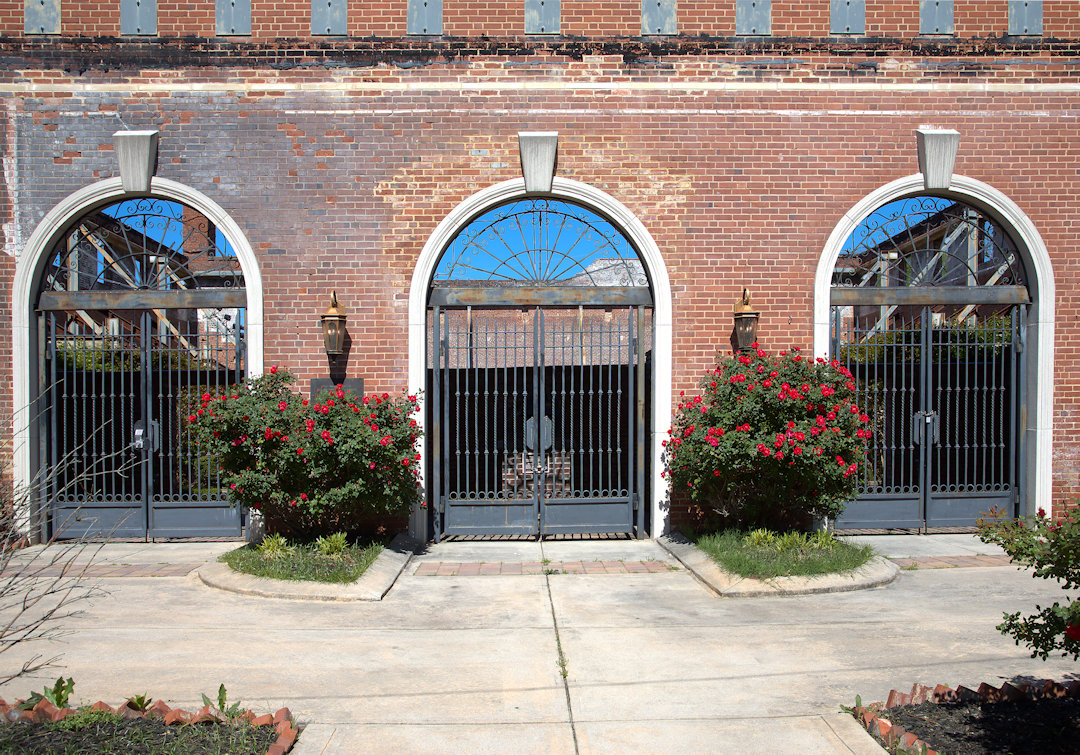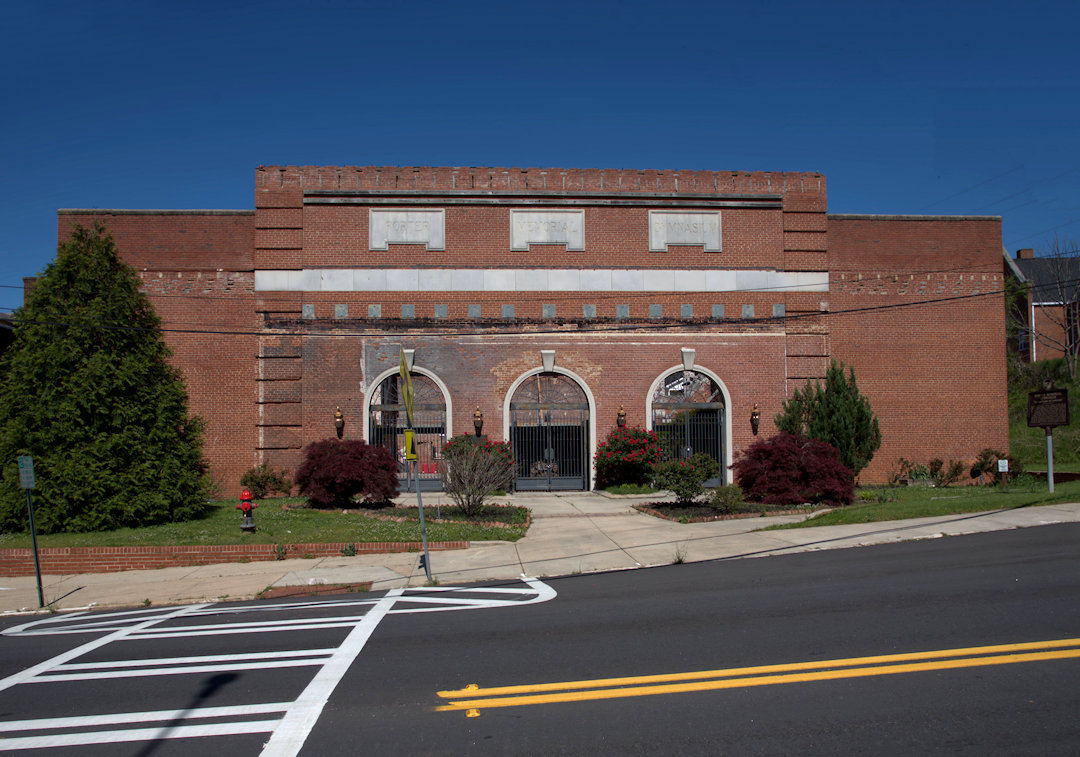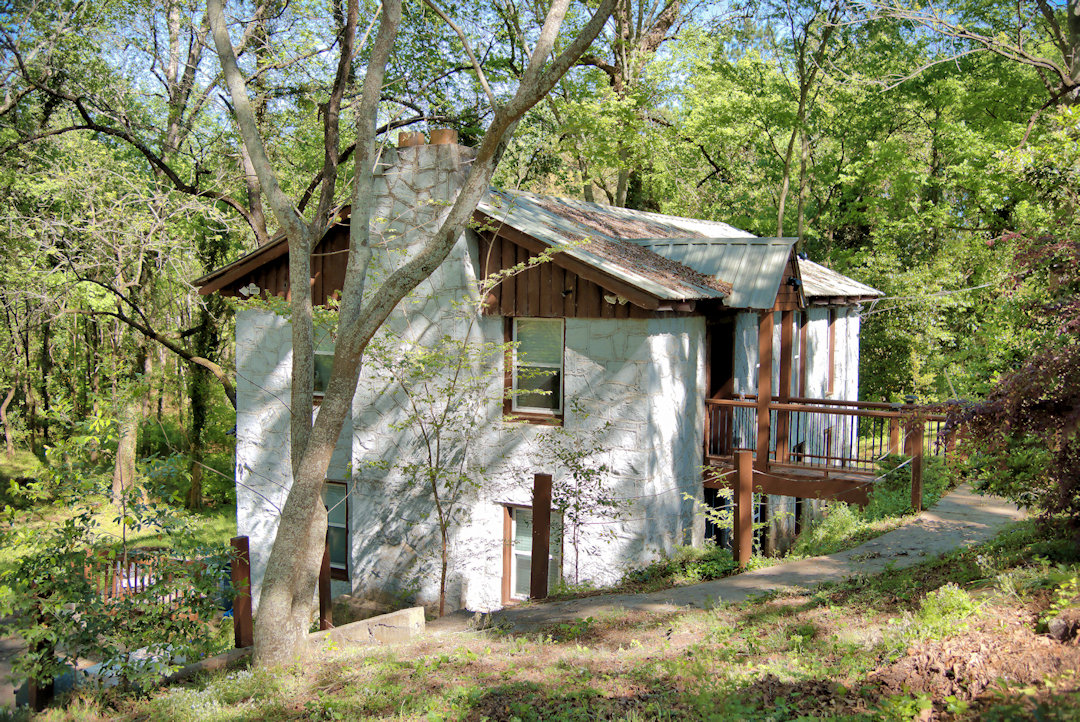
The historic Boy Scout Hut was dedicated on 28 March 1931 and was described as a log cabin at the time. The present stucco walls are a later addition but the interior retains its original log walls, from what I’ve been able to discern from photographs on the internet. The area around the cabin was later named Ivey Park but I believe the site is now in private hands.

Porterdale Historic District, National Register of Historic Places

